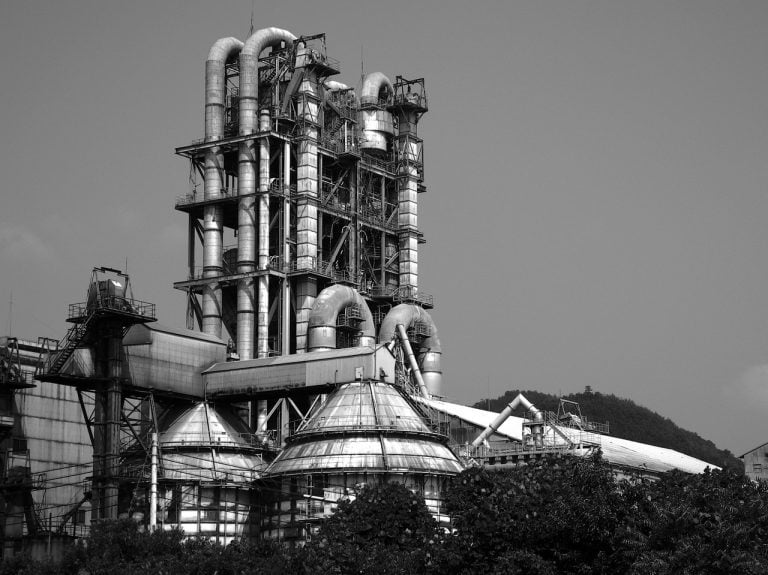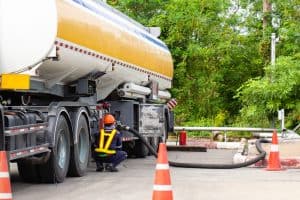Pioneering a Sustainable Energy Future with Suffolk Oil
The Birth of Oil: A Journey Millions of Years in the Making
Oil, the start of our modern world, has a remarkable origin story that stretches back millions of years. The journey starts underground, where the conditions are perfect for creating this resource. It begins with the buildup of dead plankton and microorganisms in ancient oceans and lakes long ago. These bodies of water, low in oxygen, provide the perfect conditions for organic matter to escape complete decomposition.
Over many years, sediment and minerals cover the organic material, causing it to experience high heat and pressure. This gradual transformation, known as diagenesis, marks the inception of kerogen, the precursor to crude oil. It happens slowly over a long time, where time is important in making one of the world’s most important resources.
From Kerogen to Crude: The Geological Alchemy
The process of turning kerogen into the valuable crude oil we use is a transformation that occurs deep within the Earth’s crust. It happens when the buried organic material experiences higher temperatures and pressures. This phase is called catagenesis, and it’s a crucial step. During catagenesis, the complex organic molecules in kerogen change into simpler hydrocarbons, which are the basic parts that make up oil.
Picture this transformation unfolding over millions of years, typically at depths ranging from 7,500 to 15,000 feet below the Earth’s surface. Temperatures in this subterranean realm can range from a moderate 50°C to a scorching 150°C.
The type of crude oil produced depends on the original organic material and the amount of heat and pressure it undergoes. It can be light or heavy, and have a sweet or sour smell. This complex process creates different types of crude oil that power industries around the world.
Migration and Trapping: The Journey to Reservoirs
Oil starts deep in the Earth and travels to potential reservoirs on a remarkable journey. This migration is an essential step in the oil’s availability for extraction. It begins as the oil, buoyed by its lower density compared to the surrounding rock and water, starts to ascend. The oil moves slowly through rocks like sandstone and limestone called reservoir rocks.
However, this upward journey is not without its challenges. The oil follows a path underground, but it eventually encounters a solid rock layer that blocks its movement. This cap rock is the key to trapping the oil.
There are various kinds of traps that hold oil, such as structural traps like folds and faults, and stratigraphic traps created by differences in rock layers. These natural formations are really important in forming oil fields, where we find huge reserves of oil waiting to be found.

Modern Extraction: Bringing Hidden Treasures to the Surface
The story of oil doesn’t end with its formation; it continues with modern extraction methods that unlock the Earth’s hidden treasures. Accessing oil reservoirs buried deep beneath the Earth’s surface is a complex and technologically advanced endeavor. Two primary techniques—drilling and hydraulic fracturing—are instrumental in reaching these subterranean reserves.
Drilling is the process of using special equipment and machinery to dig deep into the Earth’s crust, reaching where the oil reserves are hidden. Hydraulic fracturing, often called fracking, is a technique that involves injecting high-pressure fluids to free the trapped oil in rock formations. Once we reach the oil reservoir, we carefully extract the crude oil, and then it’s transported to refineries in a well-organized operation.
At Suffolk Oil, we take pride in our commitment to responsible and efficient extraction practices. We use advanced technology and follow strict environmental rules to make sure that our extraction process is efficient and eco-friendly.
The Environmental Aspect: A Balancing Act
While oil is undeniably a cornerstone of modern civilization, it comes with significant environmental considerations. Issues such as oil spills, habitat destruction, and the contribution to greenhouse gas emissions have brought environmental concerns to the forefront of the oil industry. At Suffolk Oil, we recognize the importance of addressing these challenges and minimizing our environmental footprint.
One of the key aspects of our approach is the adoption of advanced technologies and practices that reduce environmental impact. This includes measures to minimize emissions during drilling operations, responsible management of waste products, and investments in renewable energy sources. We strongly believe that recognizing the environmental impacts of extracting oil is crucial as we work towards a more eco-friendly future.
The Future of Oil: Innovations and Sustainable Practices
The oil industry stands at a crossroads, where sustainability and innovation are shaping its future. At Suffolk Oil, we are at the forefront of this transformative journey. We don’t just stop at extracting oil; we’re committed to creating better, eco-friendly ways of doing it that match the values of environmental responsibility.
In our pursuit of a sustainable future, we prioritize reducing carbon emissions, exploring alternative energy sources, and enhancing energy efficiency. We advocate for a balanced energy approach, harmoniously integrating oil with renewable energies. This approach ensures that we meet today’s energy demands without compromising future generations’ needs. Suffolk Oil is committed to forging a path toward a sustainable and energy-secure world by understanding the geology of oil and embracing responsible innovation.


